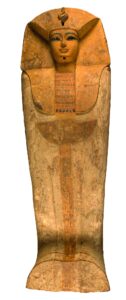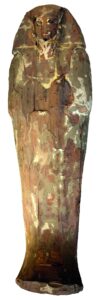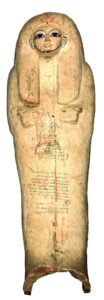Ramses IV Heqamaatre
Son of Ramses III and Iset Ta-Hemdjert
New Kingdom, 20th Dynasty

Although his father had been murdered by conspirators trying to take over the throne for the son of a minor queen, the legitimate crown prince, Ramses IV, succeeded in keeping the crown. The new monarch, who was probably around forty when he became king, began his reign by punishing those who had orchestrated his father’s assassination. During his short reign of six to seven years, he did much to honor his father’s memory and continue his policies. One major document from his reign is the Great Harris Papyrus, which mentions his ascension and some of his achievements as king but largely focuses on the reign of Ramses III.
Under Ramses IV, the work gangs in the royal artisans’ village at Deir el-Medina were doubled, and several inscriptions commemorate activities prompted by his ambitious building projects. One major expedition to the Wadi Hammamat to quarry stone involved over 8,000 people, including 900 who died during the trip. The king also sent mining expeditions to the Sinai for turquoise, added to the sun temple at Heliopolis, expanded the Temple of Khonsu at Karnak built by his father, and commissioned a large mortuary temple on the west bank at Thebes.
Ramses was buried originally in KV 2 in the Valley of the Kings before being moved by the 21st Dynasty priests to KV 14 (the tomb of Tawosret and Setnakht). Eventually, he was moved to the cache in the tomb of Amenhotep II.























